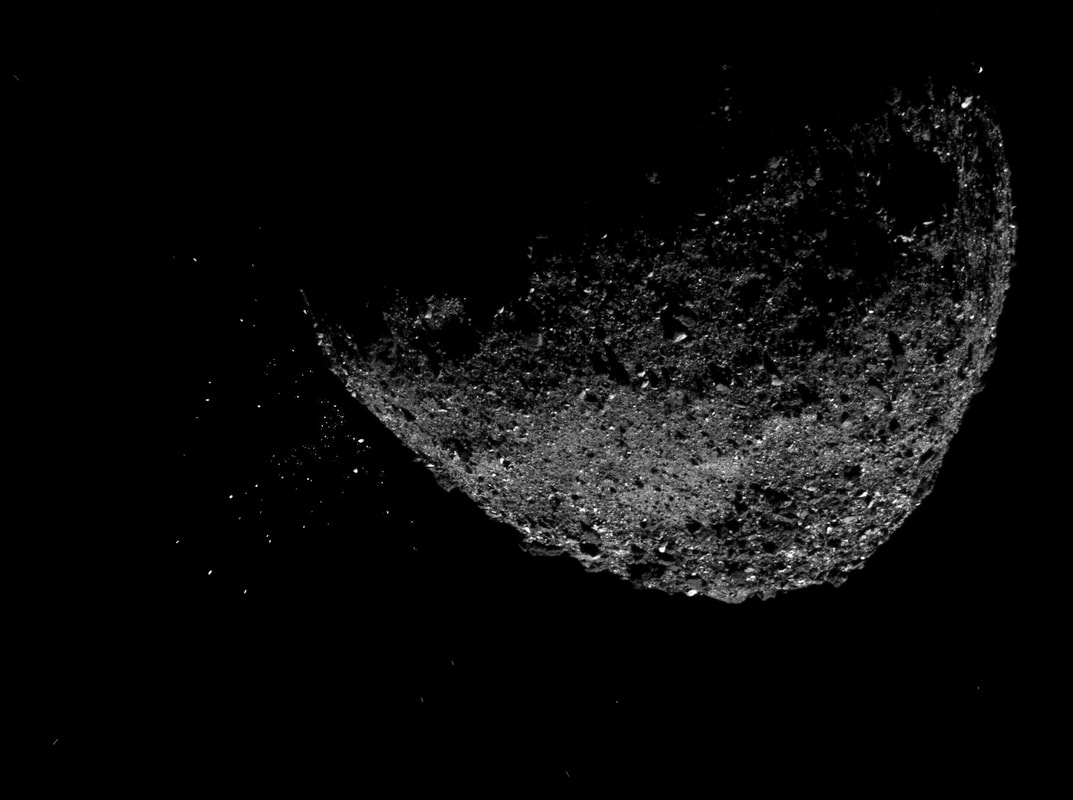In 1996 the, previously inert, and in no way special, main belt asteroid 1979 OW7 (a: 3.16AU; e: 0.16; P: 5.62years) was observed to have a faint dust trail, persisting for a few weeks. The trail was detected by the Belgian astronomer Eric Elst (b.1936) using a photograph taken by Guido Pizarro at ESO’s (European Southern Observatory) La Silla Observatory when the asteroid was near its perihelion point. A reoccurrence of the dust trail (again persisting for several weeks) was seen during the asteroid’s 2002 perihelion passage and the object (also known as asteroid 7968 Elst-Pizarro) is now considered to be a comet (designated 133P/Elst-Pizarro). Considerable interest in 7968 focused on whether the object was a comet, where its orbit had (co-incidentally) evolved to now being wholly within the main belt; or whether the object was a ‘disrupted’ asteroid.
En 1996 on a observé que l’astéroïde 1979 OW7 (a: 3.16AU; e: 0.16; P: 5.62ans) de la ceinture principale avait une traînée de poussière qui persistait pendant plusieurs semaines. Cette traînée a été observée par l’astronome belgique Eric Elst (ne.1936) en utilisant une photo prise par Guido Pizarro à l'observatoire de La Silla de l'ESO (European Southern Observatory) quand l’astéroïde était près de sa périhélie. On a vu une recurrence de la traînée de poussière (qui durait plusieurs semaines) pendant le passage périhélie de l’astéroïde (en 2002), et l’objet (connu comme l’ astéroïde 7968 Elst-Pizarro) est maintenant considéré une comète (désignée 133P/Elst-Pizarro)
Notice the release of small particles to the lower left. Courtesy of Nass/Goddard
This asteroid/comet was the first of a new classification of very rare object: the MBC (Main Belt Comets) to be identified. In 2005 two further MBCs were detected (118401 1999 RE70 and 238/P Read) and up to today, just thirty-nine confirmed MBCs have been identified. All the objects thus far detected have dimensions of less than 5km. The most likely origin of these objects appears to be the fragmentation of a larger, icy object within the main belt.
MBCs are not the only anomalies within the main belt. The Apollo class (and NEA and PHA) asteroid 3200 Phaethon (a: 1.27AU e: 0.89 P: 1.43years) has debris along the length of its orbit (as do most comets) and when the Earth passes through the object’s path the Geminids meteor shower is seen. Dynamically, it would appear that 3200 Phaethon (Tj: 4.511); and the Apollo class (NEA) asteroid 155140 2005 UD (a: 1.27AU e: 0.87 P: 1.44years Tj: 4.506) and the source of the Sextantids meteor stream, were part of a larger object which split circa 10,000 years ago.
Next month
We will look at hypotheses and theories as to the origin of the asteroids.
The ‘topic’ list for future monthly blogs is now included in our blog index (alongside previous monthly topics)


